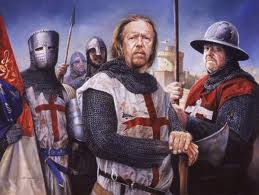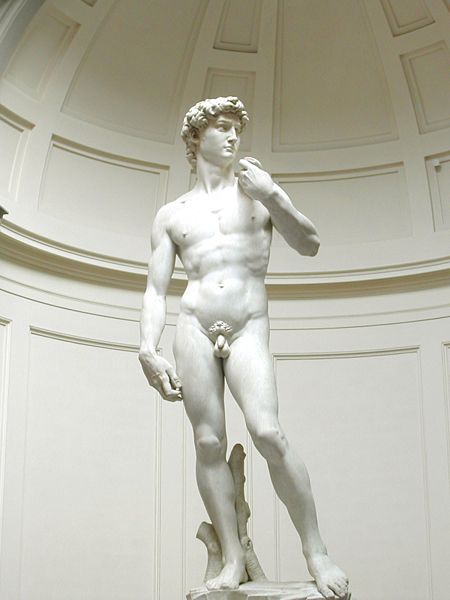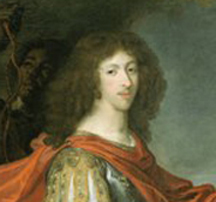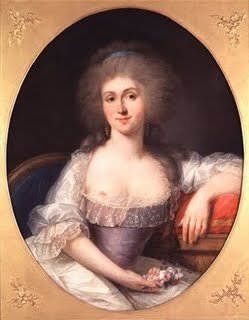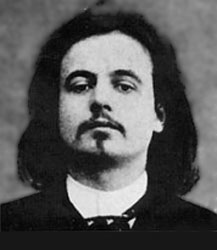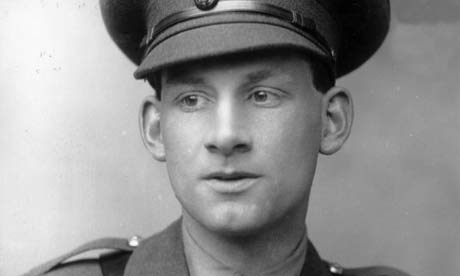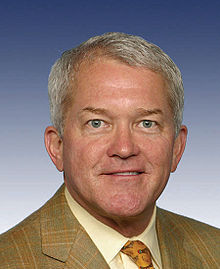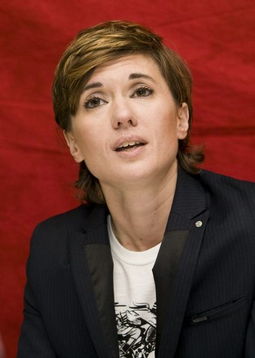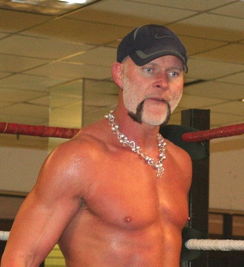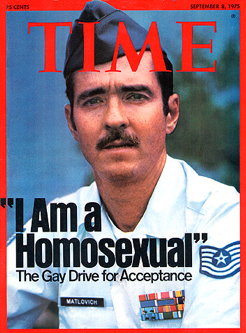|
presents THIS DAY IN GAY HISTORY based on: The White Crane Institute's 'Gay Wisdom', Gay Birthdays, Gay For Today, Famous GLBT, glbt-Gay Encylopedia, Today in Gay History, Wikipedia, and more …
Collected by Ted September 8 [{(o)}]|[{(o)}]|[{(o)}]|[{(o)}]| [{(o)}]|[{(o)}]
1157 – Richard The Lion Heart, or Cœur de Lion, King of England, born (d.1199); Known to most from Sir Walter Scott's "Ivanhoe," as a young man Richard fell in love with the king of France, Philip II. Richard was an educated man who composed poetry, writing in French and Limousin. He was said to be very attractive; his hair was between red and blond, and he was light-eyed with a pale complexion. He was apparently of above average height, but as his remains have been lost since at least the French Revolution, his exact height is unknown. Boswell's translation of King Henry II's journal records that Richard (then the Duke of Aquitaine) "remained with Philip, the king of France, who so honored him for so long that they ate every day at the same table and from the same dish, and at night their beds did not separate them. And the king of France loved him as his own soul; and they loved each other so much that the king of England was absolutely astonished at the passionate love between them and marveled at it." Before 1948, no historian appears to have clearly affirmed that Richard was homosexual. Historian Jean Flori, however, has analysed the work of contemporary historians, and reported that they quite generally accepted that Richard was homosexual. However, not all historians agree regarding Richard's sexuality; but Flori analyzed the available contemporaneous evidence in great detail, and concluded that Richard's two public confessions and penitences (in 1191 and 1195) must have referred to the "sin of sodomy". There are contemporaneous accounts of Richard's relations with women, and Richard acknowledged one illegitimate son, Philip of Cognac. Flori thus concludes that Richard was probably bisexual, but he does agree that the contemporaneous accounts do not support the allegation that Richard had a homosexual relation with King Philip II of France. The historian John Gillingham has suggested that theories that Richard was homosexual probably stemmed from an official record announcing that, as a symbol of unity between the two countries, the kings of France and England had slept overnight in the same bed. He expressed the view that this was "an accepted political act, nothing sexual about it; ... a bit like a modern-day photo opportunity." Richard did later marry somewhat unenthusiastically. Upon death his widow had to sue the pope for recognition as widow, as Richard hadn't bothered to make his marriage official.
1504 – Michelangelo's David is unveiled in Florence.
1621 – Louis II De Bourbon, Prince De Condé, French General, born; Known as "the Great Condé," this greatest of French generals was an intimate of Moliere, Racine, Boileau, and La Bruyère. He also had the misfortune to be acquainted with "Madame"—the gossipy wife of Philip, duc d'Orleans—who spread the word about Conde's amours with his own sex. Condé, a clever gent, went to great pains to establish a reputation as a great womanizer, but between the sharp tonge of Madame and the word of the well-known courtesan, Ninon de Lenclos, who was in a position to know, Condé fooled no one with his boasts.
1749 – Marie Therese Louise, the Princess de Lamballe, born (d.1792); Rumored to have been the aristocratic lover of Marie Antoinette.. She was killed in the massacres of September 1792 during the French Revolution.
1873 – Alfred Jarry (d.1907) was a French writer born in Laval, Mayenne, France, not far from the border of Brittany; he was of Breton descent on his mother's side. Best known for his play Ubu Roi (1896), which is often cited as a forerunner to the theatre of the absurd, Jarry wrote in a variety of genres and styles. He wrote plays, novels, poetry, essays and speculative journalism. His texts present some pioneering work in the field of absurdist literature. A precociously brilliant student, Jarry enthralled his classmates with a gift for pranks and troublemaking. At the lycée in Rennes when he was 15, he led of a group of boys who devoted much time and energy to poking fun at their well-meaning, obese and incompetent physics teacher, a man named Hébert. Jarry and a classmate wrote a play they called Les Polonais and performed it with marionettes in the home of one of their friends. The main character, Père Heb, was a blunderer with a huge belly; three teeth (one of stone, one of iron, and one of wood); a single, retractable ear; and a misshapen body. In Jarry's later work Ubu Roi, Père Heb would develop into Ubu, one of the most monstrous and astonishing characters in French literature. At 17 Jarry passed his baccalauréat and moved to Paris to prepare for admission to the École Normale Supérieure. Though he was not admitted, he soon gained attention for his original poems and prose-poems. A collection of his work, Les minutes de sable mémorial, was published in 1893. That same year, both his parents died, leaving him a small inheritance which he quickly spent. Jarry had meantime discovered the pleasures of alcohol, which he called 'my sacred herb' or, when referring to absinthe, the 'green goddess'. A story is told that he once painted his face green and rode through town on his bicycle in its honour (and possibly under its influence). Drafted into the army in 1894, his gift for turning notions upside down defeated attempts to instill military discipline. The sight of the small man in a uniform much too large for his less than 5-foot frame—the army did not issue uniforms small enough—was so disruptively funny that he was excused from parades and marching drills. Eventually the army discharged him for medical reasons. His military experience eventually inspired the novel, Days and Nights. Jarry returned to Paris and applied himself to drinking, writing, and the company of friends who appreciated his witty, sweet-tempered, and unpredictable conversation. This period is marked by his intense involvement with Remy de Gourmont in the publication of L'Ymagier, a luxuriously produced 'art' magazine devoted to the symbolic analysis of medieval and popular prints. Symbolism as an art movement was in full swing at this time and L'Ymagier provided a nexus for many of its key contributors. The spring of 1896 saw the publication, in Paul Fort's review Le Livre d'art, of Jarry's 5-act play Ubu Roi — the rewritten and expanded Les Polonais of his school days. Ubu Roi's savage humour and monstrous absurdity, unlike anything thus far performed in French theatre, seemed unlikely to ever actually be performed on stage. However, impetuous theater director Aurélien-Marie Lugné-Poe took the risk, producing the play at his Théâtre de l'Oeuvre. On opening night (December 10, 1896), with traditionalists and the avant-garde in the audience, King Ubu stepped forward and intoned the opening word, 'Merdre!' (Shit!!!). A quarter of an hour of pandemonium ensued: outraged cries, booing, and whistling by the offended parties, countered by cheers and applause by the more forward-thinking contingent. Such interruptions continued through the evening. At the time, only the dress rehearsal and opening night performance were held, and the play was not revived until 1907. The play brought fame to the 23-year-old Jarry, and he immersed himself in the fiction he had created. From then on, Jarry would always speak in Ubu's style. He adopted Ubu's ridiculous and pedantic figures of speech; for example, he referred to himself using the royal we, and called the wind 'that which blows' and the bicycle he rode everywhere 'that which rolls'. Living in worsening poverty, neglecting his health, and drinking excessively, Jarry went on to write what is often cited as the first cyborg sex novel, The Supermale. Unpublished until after his death, his fiction Exploits and Opinions of Dr Faustroll, pataphysician (Gestes et opinions du docteur Faustroll, pataphysicien) describes the exploits and teachings of a sort of antiphilosopher who, born at age 63, travels through a hallucinatory Paris in a sieve and subscribes to the tenets of 'pataphysics'. In 'pataphysics', every event in the universe is accepted as an extraordinary event. In his final years, he was a legendary and heroic figure to some of the young writers and artists in Paris. After his death, Pablo Picasso, fascinated with Jarry, acquired his pistol and wore it on his nocturnal expeditions in Paris, and later bought many of his manuscripts as well as executing a fine drawing of him. Jarry lived in his 'pataphysical' world until his death in Paris on November 1, 1907 of tuberculosis, aggravated by drug and alcohol use. It is recorded that his last request was for a toothpick.
1886 – Siegfried Sassoon CBE MC (d.1967) was an English poet, author and soldier. Decorated for bravery on the Western Front, he became one of the leading poets of the First World War. His poetry both described the horrors of the trenches, and satirised the patriotic pretensions of those who, in Sassoon's view, were responsible for a pointless war. He later won acclaim for his prose work, notably his three-volume fictionalised autobiography, collectively known as the "Sherston Trilogy". Siegfried Sassoon was born and grew up in a neo-gothic mansion in Kent, to a Jewish father and an Anglo-Catholic mother. There was no German ancestry in Siegfried's family; his mother named him Siegfried because of her love of Wagner's operas. His father died when he Sassoon was 9 years old. Sassoon was attended Clare College, Cambridge, where from 1905 to 1907 he read history. He went down from Cambridge without a degree and spent the next few years hunting, playing cricket and writing verse: some he published privately. Since his father had been disinherited from the Sassoon fortune for marrying a non-Jew, Siegfried had only a small private fortune that allowed him to live modestly without having to earn a living. Motivated by patriotism, Sassoon joined the British Army at the threat of World War I , and was in service with the Sussex Yeomanry on the day the United Kingdom declared war (4 August 1914). He was commissioned into 3rd Battalion (Special Reserve), Royal Welch Fusiliers as a second lieutenant on 1915, and in November was sent to the 1st Battalion in France. During the French campaign, he met Robert Graves and they became close friends. The intensity of their early relationship is demonstrated in Graves's collection Fairies and Fusiliers (1917), which contains many poems celebrating their friendship. Sassoon himself remarked upon a "heavy sexual element" within it. United by their poetic vocation, they often read and discussed one another's work. Though this did not have much perceptible influence on Graves's poetry, Sassoon's views on what may be called 'gritty realism' profoundly affected Sassoon's concept of what constituted poetry. He soon became horrified by the realities of war, and the tone of his writing changed completely: where his early poems exhibit a Romantic, dilettantish sweetness, his war poetry moves to an increasingly discordant music, intended to convey the ugly truths of the trenches to an audience hitherto lulled by patriotic propaganda. Details such as rotting corpses, mangled limbs, filth, cowardice and suicide are all trademarks of his work at this time, and this philosophy of 'no truth unfitting' had a significant effect on the movement towards Modernist poetry. Sassoon's periods of duty on the Western Front were marked by exceptionally brave actions, including the single-handed, but vainglorious, capture of a German trench in the Hindenburg Line. Armed with grenades he scattered 60 German soldiers. Sassoon's bravery was inspiring to the extent that soldiers of his company said that they felt confident only when they were accompanied by him. He often went out on night-raids and bombing patrols and demonstrated ruthless efficiency as a company commander. Deepening depression at the horror and misery the soldiers were forced to endure produced in Sassoon a paradoxically manic courage, and he was nicknamed "Mad Jack" by his men for his near-suicidal exploits. On 27 July 1916 he was awarded the Military Cross. Despite his decoration and reputation, he decided in 1917 to make a stand against the conduct of the war. One of the reasons for his violent anti-war feeling was the death of his friend, David Cuthbert Thomas. He would spend years trying to overcome his grief. At the end of a spell of convalescent leave, Sassoon declined to return to duty; instead, encouraged by pacifist friends such as Bertrand Russell, he sent a letter to his commanding officer, titled Finished with the War: A Soldier's Declaration. Forwarded to the press and read out in Parliament by a sympathetic MP, the letter was seen by some as treasonous ("I am making this statement as an act of wilful defiance of military authority") or at best condemnatory of the war government's motives ("I believe that the war upon which I entered as a war of defence and liberation has now become a war of aggression and conquest"). Rather than court-martial Sassoon, the Under-Secretary of State for War, Ian Macpherson decided that he was unfit for service and had him sent to Craiglockhart War Hospital near Edinburgh, where he was officially treated for neurasthenia ("shell shock"). Before declining to return to active service he had thrown the ribbon from his Military Cross into the river Mersey. At Craiglockhart, Sassoon met Wilfred Owen, a fellow poet who would eventually exceed him in fame. It was thanks to Sassoon that Owen persevered in his ambition to write better poetry. A manuscript copy of Owen's Anthem for Doomed Youth containing Sassoon's handwritten amendments survives as testimony to the extent of his influence and is currently on display at London's Imperial War Museum. To all intents and purposes, Sassoon became to Owen "Keats and Christ and Elijah"; surviving documents demonstrate clearly the depth of Owen's love and admiration for him. Both men returned to active service in France, but Owen was killed in 1918. The war had brought Sassoon into contact with men from less advantaged backgrounds, and he had developed socialist sympathies. Having lived for a period at Oxford, where he spent more time visiting literary friends than studying, he dabbled briefly in the politics of the Labour movement, and in 1919 took up a post as literary editor of the socialist Daily Herald. Sassoon later embarked on a lecture tour of the USA, as well as travelling in Europe and throughout Britain. Meanwhile, he was beginning to express his homosexuality more openly, embarking on an affair with artist Gabriel Atkin, to whom he had been introduced by mutual friends. During his US tour, he met a young actor who treated him callously. Nevertheless, he was adored by female audiences. Sassoon, having matured greatly as a result of his military service, continued to seek emotional fulfilment, initially in a succession of love affairs with men, including the actor Ivor Novello; Novello's former lover, the actor Glen Byam Shaw; German aristocrat Prince Philipp of Hesse; the writer Beverley Nichols; and an effete aristocrat, the Hon. Stephen Tennant. Only the last of these made a permanent impression, though Shaw remained his close friend throughout his life. In September 1931, Sassoon rented and began to live at Fitz House, Teffont Magna, Wiltshire. In December 1933, to many people's surprise, he married Hester Gatty, who was many years his junior; this led to the birth of a child, something which he had long craved. This child, their only child, George (1936-2006) was adored by Siegfried, who wrote several poems addressed to him. However, the marriage broke down after World War II, Sassoon apparently unable to find a compromise between the solitude he enjoyed and the companionship he craved. Separated from his wife in 1945, Sassoon lived in seclusion at Heytesbury in Wiltshire, although he maintained contact with a circle which included E. M. Forster and J. R. Ackerley. One of his closest friends was the young cricketer Dennis Silk.Seigfried Sassoon died one week before his 81st birthday in 1967 of stomach cancer.
1934 – Sir (Peter Maxwell) Max Davies (d.2016) was a renowned living British composer, and certainly one of the most prolific, having composed over three hundred works encompassing virtually every genre of classical music. His music, which often incorporates influences outside of the Western musical tradition or pushes beyond the boundaries of established musical style, is regarded by some critics as iconoclastic. It is probably more accurate, however, to describe the "new music" Davies created as a synthesis of many diverse musical forms. Max, as Davies is familiarly known, was born on September 8, 1934, in Salford (now part of Manchester) in the north of England. He studied piano as a child and subsequently began composing at an early age. At eight years of age, he made his musical debut, playing a piano piece he composed on a BBC radio program for children. As his school provided little in the way of music education, Davies independently sought out various sources of unfamiliar music, including scores from libraries and radio programs. Davies began his formal musical studies when he was admitted to both the Royal Manchester College of Music and Manchester University simultaneously. He earned a master's degree from the University in 1956, after the completion of a dissertation on Indian ragas. In the same year, he received a degree in composition from Royal Manchester. While at the College of Music, Davies, along with fellow students Alexander Goehr, Harrison Birtwistle, Elgar Howarth, and John Ogdon, formed New Music Manchester, a performing ensemble dedicated to avant-garde music. Davies subsequently embarked on further studies in Rome and at Princeton. From 1958 to 1961, Davies was the music headmaster at Cirencester Grammar School. His experiences in musical pedagogy had a profound effect on his composition style, which became more theatrical and yet less complicated as a result of teaching children. While at Princeton, Davies began performing his first opera, Taverner, based on the life of sixteenth-century English composer John Taverner and incorporating many elements of the earlier composer's music. Davies worked on this ambitious composition, for which he also wrote the libretto, for over six years, then had to reconstruct portions of it after the manuscript score was partially destroyed by a fire. By the time of the opera's debut in 1972, Davies was already known for his daring, edgy works, particularly in musical theater, among which the most notable is Eight Songs for a Mad King (1969), in which the vocalist, portraying King George III in his late, insane years, sings and talks to his birds, represented by various instruments. In order to be surrounded by a natural silence in which to create his works, Davies moved to the Orkney Islands, in the North Sea off the coast of Scotland, in 1970. In this setting, his compositions became less severe, much clearer in their harmonies, softer, and--inspired by the folk traditions of the islands--more upbeat. In the decade following relocation, Davies produced a prodigious number of works in various genres. Perhaps the most notable of these are the theatrical piece Miss Donnithorne's Maggot (1974), the chamber operas The Martyrdom of St. Magnus (1977) and The Lighthouse (1980), and his eight symphonies. Although he continued to compose prolifically throughout the 1980s and 1990s, Davies, since 1999, composed less and focussed primarily on works for chamber orchestra. His later works included, nonetheless, an opera, The Doctor of Myddfai (1996) and the Antarctic Symphony (2001), the latter of which was inspired by the composer's journey to the South Polar continent. Davies was knighted by Queen Elizabeth II in 1987. While he was rather taciturn about his private life, he was quite open about being gay, and he was a patron of various gay causes, including the Lesbian and Gay Foundation (based in Manchester, his birthplace) and the Scottish Homosexual Rights Group. He died from leukaemia on 14 March 2016, aged 81, at his home in Orkney.
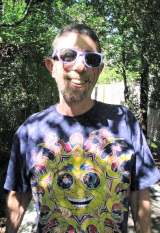
1947 - (William) Bill Silver (d.2007) was the first openly gay candidate for ministry in the United Presbyterian Church in the USA (now the Presbyterian Church U.S.A.). When his application came to the Presbytery of New York City in 1975, the majority of its members were too timid to proceed and instead asked the General Assembly for “definitive guidance.” The final debate lasted well into the early morning hours. Supporters of Bill’s candidacy argued that the church’s constitution didn’t mention homosexuality because it was immaterial and irrelevant, but were overruled. Thus began the 32-year battle over the role of lesbian and gay people in the Presbyterian Church (U.S.A.), which continues unabated to this day. William Silver, who was also known as Violet, was born in Pittsburgh, Pennsylvania. He received a Bachelor of Arts (1969) from Ohio Wesleyan University, majoring in Fine Arts and Pre-theology. He received a Masters of Divinity from the Union Theological Seminary in 1973. In his final year at Seminary, Silver came out as a gay man and based his thesis project on his coming out process, or "experience of liberation." The project consisted of a series of paintings and a journal where he documented his coming out process. In 1975 Silver requested ordination in the Presbytery of New York. His request sparked a two year, church-wide debate on the ordination of gay men in the Presbyterian Church. The General Assembly of United Presbyterian Church in the United States adopted a policy that barred self-affirming, practicing gay men from ordination in 1978. The policy, while blocking ordination, allowed for accepting homosexuals into the church and even ordaining repentant homosexuals who led a celibate or heterosexual life-style. Additionally, the policy protected gay men who were ordained prior to 1978 from being removed from the ministry. Silver continued his involvement with the church as a layman until the 1980s. He worked as a graphic artist and events organizer. He was a long-time resident and active member of the Cherry Grove, Fire Island community. He was known for his "High Purple Tea" events and as the publisher of the monthly "Violet's Wild Cherry" events guide. Silver died of complications due to AIDS in 2007.
1954 – Mark Foley is a former member of the United States House of Representatives. He served from 1995 until 2006, representing the 16th District of Florida as a member of the Republican Party. Foley resigned from Congress on September 29, 2006 acting on a request by the Republican Leadership after allegations surfaced that he had sent suggestive emails and sexually explicit instant messages to underage males who had formerly served and were at that time serving as Congressional pages. As a result of the disclosures, the Federal Bureau of Investigation (FBI) and the Florida Department of Law Enforcement conducted investigations of the messages to find possible criminal charges. Each ended with no criminal finding. Foley's voting record on LGBT-rights issues was cited in Newsweek magazine as being an example of a homosexual politician whose policies were anti-gay. However, the Human Rights Campaign, a LGBT-rights organization, did donate money to his re-election campaigns and he was endorsed by the Log Cabin Republicans in 2000. In Congress, Foley did vote against a proposed Constitutional Amendment to ban legal recognition of same-sex marriages as well as another bill that would have banned gays and lesbians from adopting in Washington D.C. On this and other social issues, his views often seemed to be that of a moderate. On September 28, 2006 ABC News Correspondent Brian Ross reported that in 2005, Foley had sent email messages from his personal AOL account to a former Congressional page, asking the page to send a photo of himself to Foley, among other things. Foley's office confirmed that Foley had sent the messages but said it has a practice of asking for photos of individuals who may ask for recommendations and that the page had requested a recommendation. The original news report prompted another page to come forward and on September 29, 2006 ABC News reported that it had seen excerpts of sexually explicit instant messages allegedly sent by Foley. The instant messages made repeated references to sexual organs and acts. On September 29, 2006, Foley tendered his resignation to Florida Governor Jeb Bush. Foley said in a statement, "I am deeply sorry and I apologize for letting down my family and the people of Florida I have had the privilege to represent." More pages came forward, alleging a history of inappropriate conduct by Foley dating back at least 10 years. Foley had been warned about the matter in 2005 by another House Republican and the House Clerk. Through his lawyer, Foley insisted he was not a pedophile and asserted that he had not "had contact" with a minor. This implied that though he did not sexually assault any male interns, he did not explicitly deny sending them solicitous and sexually overt text-messages. Foley also explained that he had a drinking problem and had made the communications while intoxicated. He checked himself into a rehab clinic on October 2, 2006. His lawyer also revealed that Foley was molested by a clergyman when he was between the ages of 13 and 15 adding that "Mark Foley wants you to know he is a homosexual." Federal authorities said the explicit messages could result in Foley's prosecution, under some of the same laws he helped to enact. However, Florida officials have closed the investigation of Foley, stating they found "insufficient evidence" to file criminal charges, since the page was over the age of 18. After leaving Congress, Foley entered the real estate business in Palm Beach, Florida. He also came out publicly, and as of 2007 was in a relationship with a Palm Beach dermatologist, Layne Nisenbaum.
1958 – A California appellate court overturns the nuisance conviction of a theatre owner because of sex in the theatre.
1967 – Kimberly Peirce is an American feature film director, notable for her debut feature film, Boys Don't Cry (1999). Her second feature, Stop-Loss, was released by Paramount Pictures in 2008, Her next feature film will be Carrie set to be released on October 18, 2013. Pierce is openly gay. While at Columbia University working on an idea for her thesis film about a female soldier in drag during the American Civil War, Peirce read a Village Voice article about the life and death of Brandon Teena, a transgender man from Nebraska who was brutally raped and murdered when his gender history was discovered. Switching from her original thesis project, Peirce traveled to Falls City, Nebraska where she conducted research, interviewed a number of people from the town including Lana Tisdale (Brandon's girlfriend) and Lana's mother, and attended the murder trial of the two homicide suspects. The subsequent film short she made for her thesis in 1995 was nominated by Columbia faculty for a Princess Grace Award, and received an Astrea Production Grant. After film producer Christine Vachon saw a version of the short, Vachon and Peirce began working on a feature film. In order to fund the writing and development of the feature, Peirce worked as a paralegal on the midnight shift, as a 35mm film projectionist, and received a New York Foundation for the Arts grant. With help from the Sundance Institute's Filmmakers, Writers and Producers Labs in 1997, Peirce completed the feature film in 1999. Upon its release, Boys Don't Cry became one of the most acclaimed and talked about films of the year, opening at the Venice, Toronto and New York Film Festivals and earning many honors, including the Best Actress Oscar, Golden Globe, Independent Spirit award and many other awards for the film's star, Hilary Swank. Peirce is currently working on a sex comedy "with a gender twist" for producer Judd Apatow and Universal Studios
On November 23, 1997, Cain debuted under the ring name Lodi ("Idol" spelled backwards, which came about due to his perceived resemblance to Billy Idol). In June 1999, WCW enhancement talent Lenny Lane persuaded Lodi to team with him as the West Hollywood Blondes, as a gay Californian duo with pink trunks and flamboyant haircuts who were later revealed to be brothers. The name was a reference to the Hollywood Blonds, a popular tag team of the early 1990s. The West Hollywood Blondes were highly controversial, and their depiction of homosexuals was protested by the Gay and Lesbian Alliance Against Defamation (GLAAD). Entertainment Media Director Scott Seomin wrote in a letter sent to Turner Network Television president Brad Siegel, stating "The character of Lenny is presented with the intention to incite the crowd to the most base homophobic behavior." Seomen later stated "the audience's reaction [to Lenny and Lodi being physically attacked by other wrestlers] gives permission to viewers to do harm to gay people in a very literal way — it's appalling." TNT quickly acceded to the demands of GLAAD, removing Lenny and Lodi from the active roster for six months. It is rumored that the bad press caused by the incident was a determining factor in the firing of Eric Bischoff as Vice President of WCW by Ted Turner. Despite portraying homosexuals on television, Cain describes himself and his former tag team partner Lenny as "pretty much straight as nails."
1975 – Gays In The Military: U.S. Air Force Tech Sergeant Leonard Matlovich, a decorated veteran of the Vietnam War, appears in his Air Force uniform on the cover of Time Magazine with the headline (printed in bold letters) "I Am A Homosexual." He is later given a general discharge. Matlovich, who received a purple heart and a bronze star, for bravery, was one of the first high profile members of the U.S. military to come out of the closet and challenge the ban on Gays serving. Matlovich is also famous for his statement, which is also the epitaph on his gravestone in Washington, DC's Congressional Cemetery, "When I was in the military they gave me a medal for killing two men and a discharge for loving one."
1977 – Justin Lee is the founder of the Gay Christian Network (GCN), a nonprofit organization that provides resources and support to gay, lesbian, bisexual, and transgender Christians. According to the GCN website, "We also work with churches and other Christian organizations to help educate the Christian community about sexual orientation issues from a Biblical standpoint." Lee founded GCN in August, 2001 to "build a supportive community to support fellow gay Christians in their Christian walks." In an interview for CNN, Lee explained the purpose of the organization:
"We're just trying to get people together who experience attraction to the same sex, however they have handled that, and who love Jesus and say, OK, you are welcome here, and then let's pray together and figure out where God wants us to take it. Lee grew up in a conservative Christian home and continues to hold many of the same core doctrines. According to The New York Times, "Justin Lee believes that the Virgin birth was real, that there is a heaven and a hell, that salvation comes through Christ alone and that he... is an evangelical Christian." As a teenager, Lee realized he was attracted to the same sex, but he did not identify himself as gay because he believed that would be a sin. Instead, he spent years fighting his attractions, praying for God to change them. In 1997, Lee posted his story online and heard from people all over the world who were similarly struggling with their faith and sexuality. This led him to be more outspoken on behalf of gay Christians and ultimately to launch The Gay Christian Network in 2001. Lee is recognizable for his baldness and noticeable lack of eyebrows due to alopecia areata, a condition he has had since childhood. He is also the director of a 2009 documentary, Through My Eyes, which explores the struggles of young gay Christians and the author of the 2012 book Torn: Rescuing the Gospel from the Gays-vs.-Christians Debate, published by Hachette Book Group.
Woods was born in Montreal, Quebec, Canada. He graduated from University of Toronto's cinema studies program and continued with a Master's degree in communication and cultural studies from York University in Toronto. Woods is a filmmaker, writer and actor who works in film, video and television. He is best known for writing, producing and acting on the TV series and digital project The Face of Furry Creek and the House of Venus Show which initially aired on OutTV in Canada, and his commercial for Starbucks featuring Bianca Del Rio and Adore Delano called "Coffee Frenemies" which has been viewed over 1 million times. Woods has also produced and directed several documentaries including Is The Village Dying? about the state of LGBT neighbourhoods, Take Up the Torch (co-directed with Michael Yerxa) about the LGBT sports movement in Canada, and This Is Drag featuring Bianca Del Rio, Adore Delano and Courtney Act which was released exclusively in Canada on March 2, 2015. Woods' latest feature documentary Two Soft Things, Two Hard Things explores the challenges faced by LGBTQ Inuit in Nunavut and how a new generation is forging a more inclusive society. The film had its world premiere on June 3, 2016 at the Inside Out Film and Video Festival In Toronto. In 2019, Woods and Yerxa debuted the documentary television series Pride, which travels around the world to profile different LGBT Pride festivals, for OutTV. The series has been nominated for 5 Leo Awards and a Canadian Screen Award.
1983 – The Ninth US Circuit Court of Appeals in San Francisco rules that federal immigration authorities cannot prevent lesbians and gay men from entering the country purely on the basis of their sexuality.
[{(o)}]|[{(o)}]|[{(o)}]|[{(o)}]| [{(o)}]|[{(o)}] |
